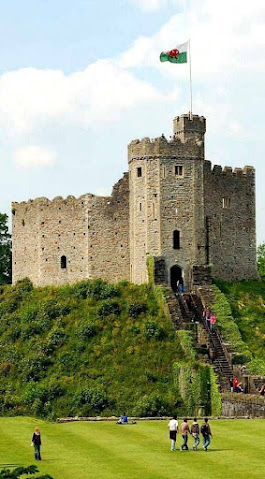"Cardiff Castle: 2,000 Years of Power, Prestige, and Preservation"
Cardiff Castle: A Timeless Landmark of Welsh Heritage
Located at the heart of Cardiff, the vibrant capital of Wales, Cardiff Castle is a magnificent structure that encapsulates over 2,000 years of history. From its Roman origins and Norman military function to its Victorian-era transformation into a romanticized Gothic palace, Cardiff Castle is one of the most iconic and historically rich landmarks in the United Kingdom.
🏛️ Roman Origins (1st Century AD)
The foundations of Cardiff Castle date back to around AD 55, when the Romans established a fort as part of their strategic network to control southern Britain. Positioned near the River Taff, the site was ideal for both military defence and trade. The Roman fort was later expanded and eventually rebuilt in stone, portions of which—particularly the Roman walls—can still be seen within the castle grounds today.
🏰 Norman Conquest and Medieval Fortification
Following the Norman invasion of Britain in the 11th century, Robert Fitzhamon, a Norman baron, constructed a motte-and-bailey castle over the Roman remains. The most enduring feature from this period is the Norman Keep, a large stone structure built atop a man-made hill (or motte), offering commanding views of the surrounding area.
During the medieval period, Cardiff Castle became a symbol of Norman power in Wales and saw multiple upgrades, including defensive walls and fortified towers. Ownership changed hands several times, with each family adding new features to improve both the castle's defence and living quarters.
🏯 The Bute Family and Victorian Transformation
The greatest transformation in the castle's appearance came during the 19th century, under the ownership of the 3rd Marquess of Bute, one of the wealthiest individuals of his time. He hired renowned architect William Burges to redesign the castle into a Gothic Revival masterpiece.
Together, they created a fantasy-like mansion within the castle walls. Key highlights include:
- The Arab Room – A ceiling adorned with exquisite gold leaf and Moorish-style patterns.
- The Banqueting Hall – Featuring lavish murals and a stunning fireplace.
- The Clock Tower – A landmark in itself, decorated with astrological symbols and stained glass.
Each room was uniquely themed, often blending mythology, religion, literature, and medieval history.
⚔️ Cardiff Castle in Wartime
Cardiff Castle played a lesser-known but vital role during World War II, when air-raid shelters were constructed within its medieval walls. These tunnels, capable of sheltering up to 1,800 people, provided protection from German bombing raids during the Cardiff Blitz. Today, visitors can walk through these restored tunnels and hear audio recordings that simulate the wartime atmosphere.
🏞️ A Living Museum
In 1947, the 5th Marquess of Bute gifted Cardiff Castle to the city of Cardiff. Today, it is managed as a public heritage site and stands as one of Wales' most popular tourist attractions.
- Main Features for Visitors:
- Roman Wall remains
- Norman Keep – offering panoramic views of the city
- Castle Apartments – with opulent Victorian interiors
- The Clock Tower – showcasing Burges’s decorative genius
- Firing Line Museum – focusing on Welsh military history
- Underground air-raid shelters
In addition to daily tours, Cardiff Castle hosts events, concerts, and festivals, further cementing its role as a cultural hub in the Welsh capital.
🧭 A Symbol of Wales' Enduring Legacy
Cardiff Castle is more than just an architectural marvel—it is a symbol of Wales' resilience, heritage, and identity. Its layers of history, from ancient Rome to modern times, make it an unmissable destination for history enthusiasts, families, and tourists alike. As a preserved monument of the past and a vibrant part of Cardiff's present, it continues to captivate all who walk through its storied gates.

.jpg)

